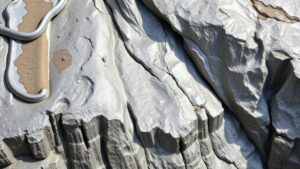How to Use Topographic Changes to Find Gold in Remote Areas
How to Use Topographic Changes to Find Gold in Remote Areas
Finding gold is a challenging endeavor, particularly in remote areas where access and information can be limited. But, understanding the topographic changes of a region can provide crucial insights into potential gold deposits. This article outlines key topographic features to look for, explains their significance in gold prospecting, and provides practical strategies for effectively utilizing these changes in terrain.
Understanding Topographic Changes
Topographic changes refer to variations in the landscape, which can include hills, valleys, ridges, and flat areas. e changes significantly influence water flow, sediment transport, and erosion processes, which are vital for gold accumulation.
Key Topographic Features to Identify
- Stream Beds: Gold is often found in stream beds, especially where water slows down and allows heavier materials to settle. Look for areas with significant bends or curves, as these can create natural traps for gold.
- Hill Slopes: Gold tends to wash down from higher elevations, accumulating in gravels and soil. Pay attention to the slopes that lead into valleys or riverbanks.
- Confluence Points: Where two waterways meet, velocities change, creating deposits of heavier materials, including gold. This can be an ideal location for gold prospecting.
- Fault Lines: Geological faults can create pathways for gold-bearing fluids to migrate. Understanding these structures can provide insights into where gold might be deposited.
The Role of Erosion and Sedimentation
Erosion is a critical process in the formation of gold deposits. As rocks weather and break down, gold particles can be transported by water. Over time, these particles settle in stream beds or areas where the flow of water decreases.
For example, a case study in California’s Sierra Nevada demonstrated that glacial and river erosion can reveal hidden gold deposits. Prospectors observed that after heavy rains, sediment accumulated in areas of reduced water flow, leading to successful gold recovery efforts.
Mapping Terrain for Gold Prospecting
Utilizing modern tools like topographic maps and Geographic Information Systems (GIS) can enhance gold prospecting efforts. Topographic maps highlight changes in elevation and slope, while GIS can analyze spatial relationships and identify potentially gold-rich areas.
- Topographic Maps: Use to determine elevation changes, contours, and drainage patterns. Look for areas with steep slopes that lead to floodplains.
- Satellite Imagery: Offers a broader view of the terrain, enabling the identification of potential sites of interest based on topography.
Field Techniques for Discovering Gold
Fieldwork is essential to validate hypotheses regarding topographic changes and gold presence. Here are some techniques to implement in the field:
- Panning: Use a gold pan in identified stream bends or areas with sediment accumulations to test for gold content.
- Metal Detecting: Employ metal detectors in areas with known topographic changes, particularly near stream beds and confluence points.
- Sampling: Collect soil and sediment samples from various locations along slopes and stream beds to analyze for gold presence.
Case Studies and Real-World Applications
Numerous prospectors and mining companies have successfully utilized topographic changes to locate gold deposits. For example, in the Yukon Territory, prospectors have observed that the steep, rugged terrain directs water flow and sediment accumulation in specific patterns. By matching these patterns with geologic maps, they have successfully identified new vein systems.
Also, in Australia, the use of drones equipped with imaging technology has allowed miners to gather topographic data efficiently. This data is then analyzed to pinpoint potential mining sites, focusing on areas where erosion and sedimentation indicate possible gold deposits.
Actionable Takeaways
In summary, leveraging topographic changes is a vital strategy for finding gold in remote areas. By understanding key features of the landscape, mapping terrain effectively, and applying field techniques, prospectors can significantly increase their chances of success. Always remember to conduct thorough research and adhere to local regulations when prospecting.
With the right approach and tools at your disposal, topography can lead you closer to discovering valuable gold deposits in some of the most challenging terrains.


